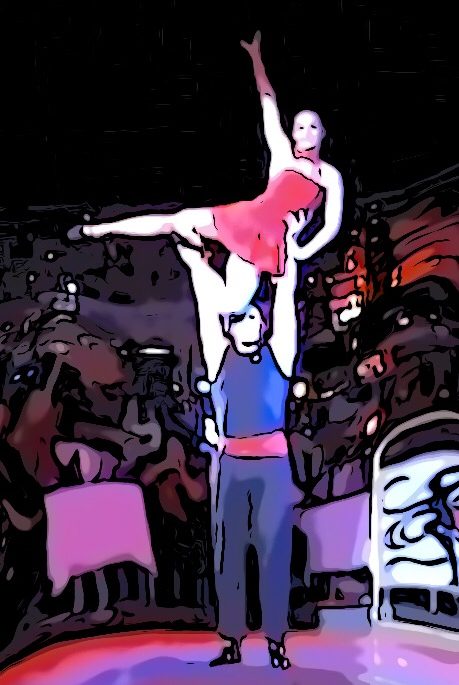Priority of the base is always the maximum stability. A stable balance is clearly visible because of the straight line of force. Just like a stalagmite in the salt grotto merges with the stalactite to form a pillar, base and flyer form a stable pillar in balance. If this line is not correct, the viewer is more likely to get the impression of a medium strong earthquake.
Balancing the flyer with the hands while standing is one of the most important basic skills for partner acrobatics. In fact, the possibilities are limited more by the imagination of acrobats than by physics. A base with injured hands, however, can not do much while standing. Therefore, he should also acquire himself this ability step by step to avoid injuries caused by overloading.
Differently high hands are caused by asymmetries by the flyer, e.g. if he has not straightened both legs while standing in the hands.
In particular, while the beginning and ending of this position, the base should always expect with a shear force to the outside and should hold accordingly inwards against it until the line of force is straight again (straw principle).
Shear forces forward or backward can be compensated by a Telemark position (see landing on skis). This deliberately creates a slight twist in the upper body, which also helps to prevent a possible hollow back. To counteract a one-sided load, the base should always change the front leg.
A shearing force inwards arises e.g. by the correction of the standing flyer in the moment he is pressing his legs together.
Deutsch

